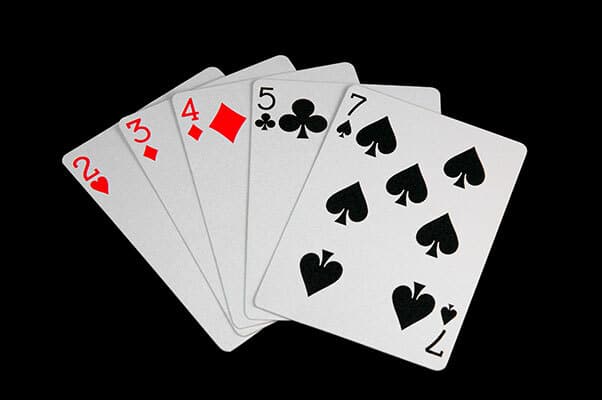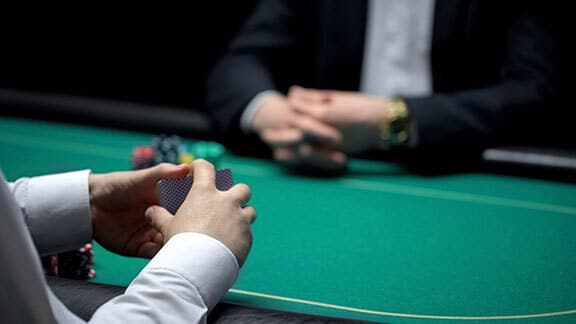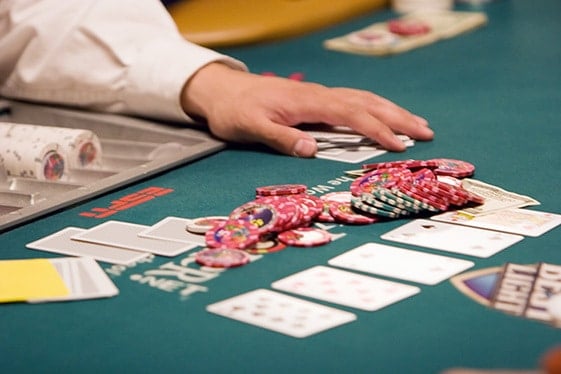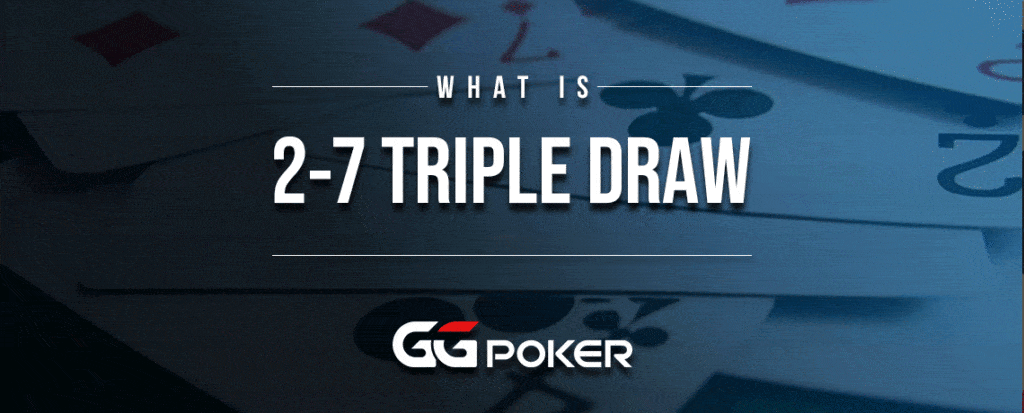There are a lot of different ways to play poker. Texas Hold’em is the most popular variant by a mile, but there are other alternatives like Seven Card Stud and Omaha. There are even options beyond those such as Razz, Badugi, and Pineapple.
The sheer number of poker variants out there allows the game to reach a much wider audience, with every player finding a variant they enjoy.
If you’ve played only Hold’em for a while and want to broaden your horizons, we have the perfect form of poker for you. This guide will introduce you to the game of 2-7 Triple Draw, explaining how it works and even some related variants.
2-7 Triple Draw overview
2-7 Triple Draw is one of the world’s most popular forms of Lowball poker, second only to Razz. It’s prevalent in mixed-game formats like the WSOP Dealer’s Choice and even received its own $1,500 event in 2022.
It combines the deuce-to-seven lowball hand rankings and the draw poker format, so we’ll break down both those terms below.

2-7 Lowball explained
The first part of 2-7 Lowball is the hand rankings. Lowball rankings are inverted versions of the traditional poker hand rankings, putting the “best” hands on the bottom and the “worst” ones on top. 2-7 Lowball is one of the two main types of lowball poker, the other being ace-to-five lowball.
2-7 Lowball is very close to the exact opposite of normal poker hand rankings. Straights and flushes count against your hand, along with pairs, three-of-a-kinds, etc. Aces are always considered high cards, which are detrimental to your hand. Hands are ranked based on the value of their highest card.
With these rules in mind, the best hand in 2-7 Lowball is 7-5-4-3-2, as long as it’s not a flush.

Draw poker explained
Draw poker refers to the way the cards are dealt to each player. It’s one of the three main types of poker, along with stud games like Razz and community card games like Hold’em and Omaha.
Draw poker gives players a complete 5-card hand upfront and allows them to change their hand through “draw rounds.” During a draw round, players can discard any number of their cards to receive new ones from the dealer. Doing this is optional; choosing not to change your hand is known as “standing pat.”
Triple draw means there are three drawing rounds and four betting rounds. The first betting round happens right after the cards are dealt. After this, the first drawing round takes place. This repeats twice; the showdown happens after the fourth betting round.
Fixed Limit 2-7 Triple Draw
The most common form of 2-7 Triple Draw uses the fixed limit betting format. Players only have two different bet sizes, the big and the small bet. The small bet equals the big blind and is used for the first two betting rounds. The big bet is double the small bet and is used for the last two betting rounds.
Fixed limit also allows you to raise, but only in increments of the current bet. For example, if you’re on the first betting round with a small bet of $2, you can call the $2 blind or raise it to $4. Another player could raise, but only to $6.
There’s also a maximum number of raises per round. The most common number is three, but this rule often varies depending on where you play or be adjusted by how many players are in the hand.
This format drastically reduces the potential for the pot to grow. Games are much less volatile, and bluffing is more complicated since you can’t make big bets to intimidate your opponents. More emphasis is placed on making monster hands since aggression is harder.

Pot Limit 2-7 Triple Draw
This variation of 2-7 Triple Draw uses the pot limit betting format. Pot limit is the standard for variants like Omaha poker and acts as a middle ground between no limit and fixed limit. Players can choose their own bet sizes but can’t make a bet bigger than the current size of the pot.
For raises, the limit is the total amount in the pot, plus the amount it would take for you to call. Let’s say Player A puts in a $5 small blind, Player B pays the $10 big blind, and Player C raises to $20. If someone else were to raise again, their maximum raise size would be the total amount in the pot ($5 + $10 + $20) + the amount they need to call ($20) = $55.
Pot limit pushes complex decision-making to the later betting rounds. Early on, there’s no prior money in the pot, making it difficult to make big bets or raises. As the pot grows, players get more room to play aggressively.
No Limit 2-7 Triple Draw
This form of 2-7 Triple Draw uses the no-limit betting format that’s frequently seen in Texas Holdem. Players can bet any amount they want right from the get-go, making aggression more common. This form of 2-7 Triple Draw is incredibly rare and mostly limited to online.
Ace-to-five Triple Draw
This form of Triple Draw uses ace-to-five rankings instead of the deuce-to-seven lowball rankings. Ace-to-five ignores straights and flushes and considers aces as the lowest cards.
Pairs, three-of-a-kinds, and four-of-a-kinds still count against your hand, and hands are still ranked by their highest card. Thus, the best hand in ace-to-five lowball is 5-4-3-2-A.




